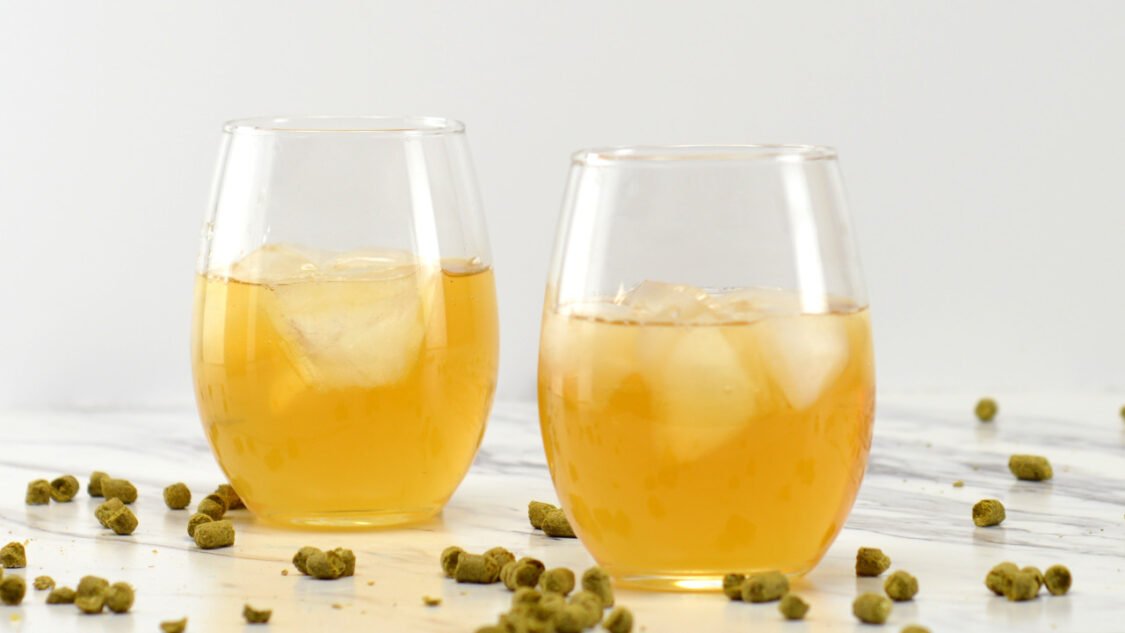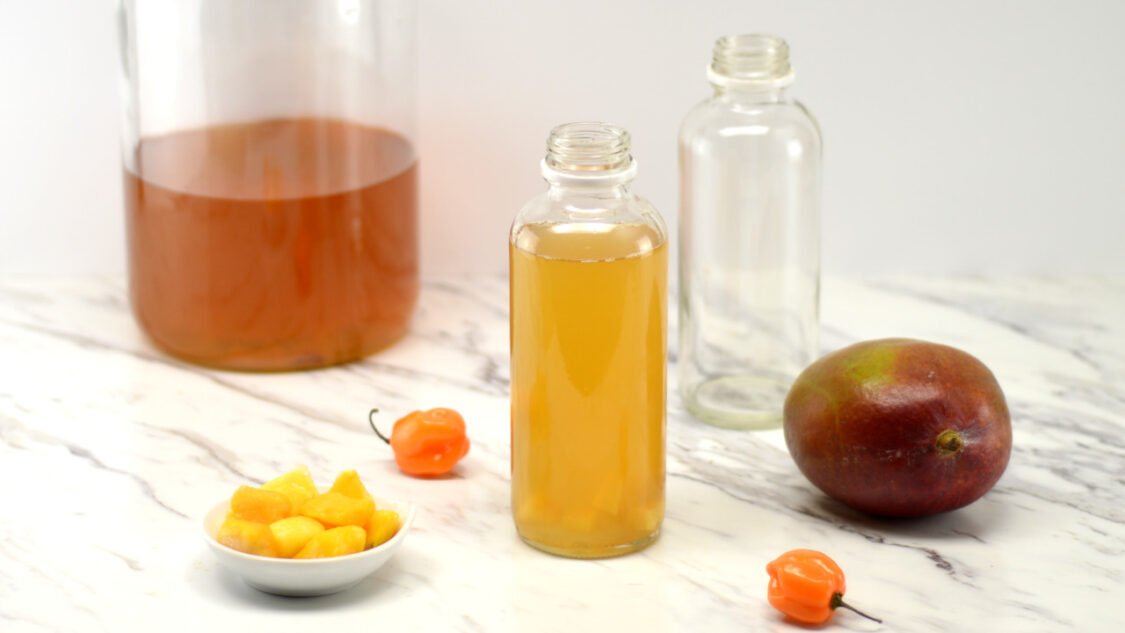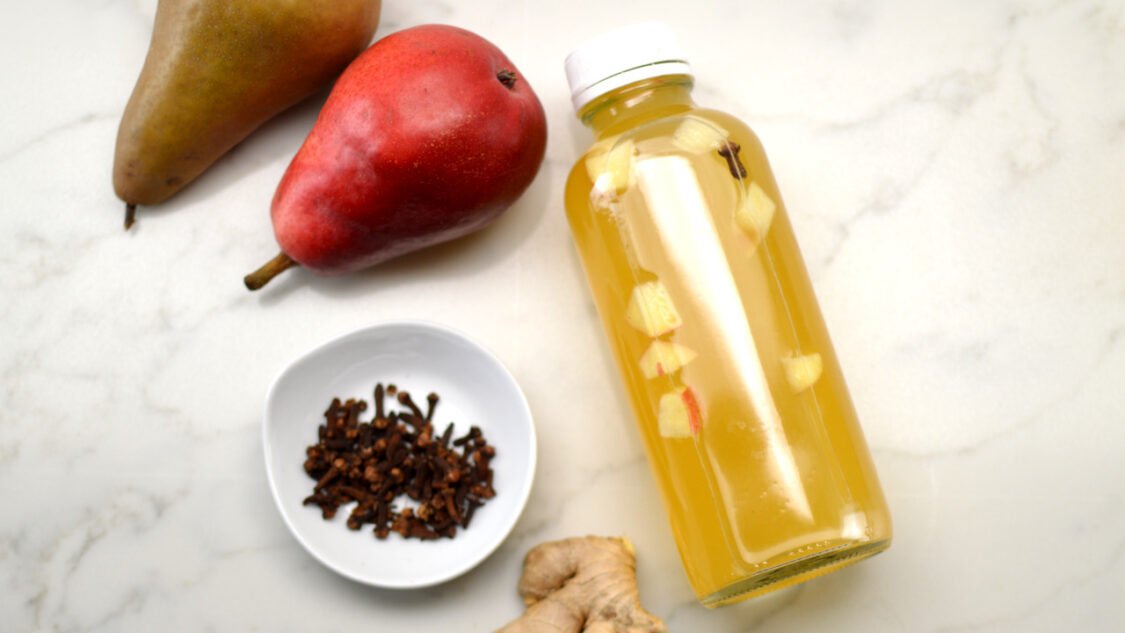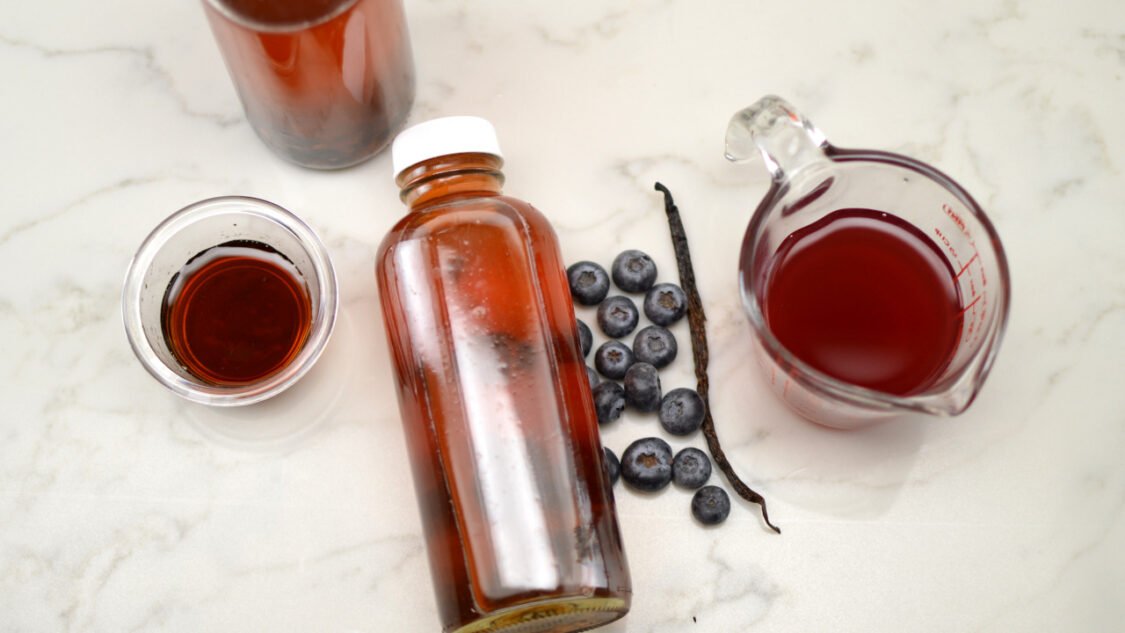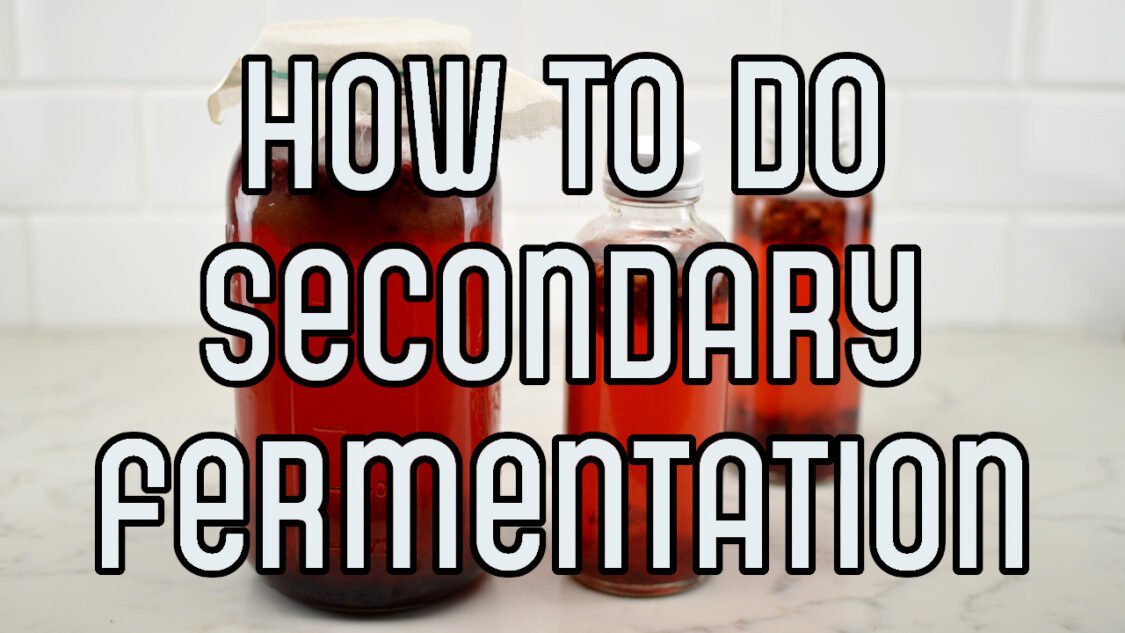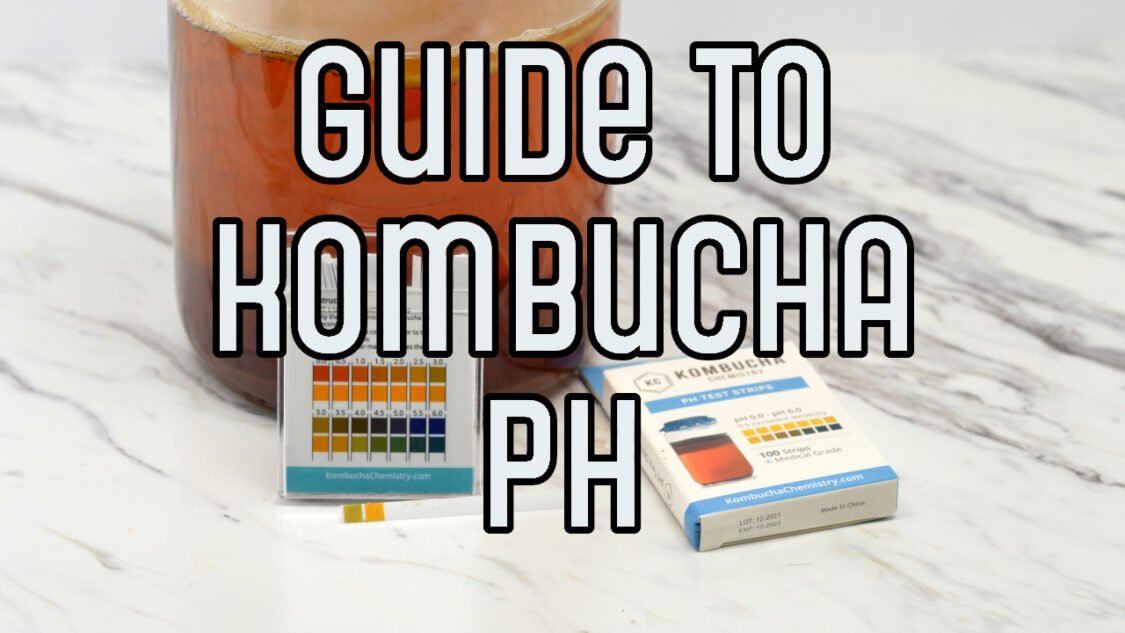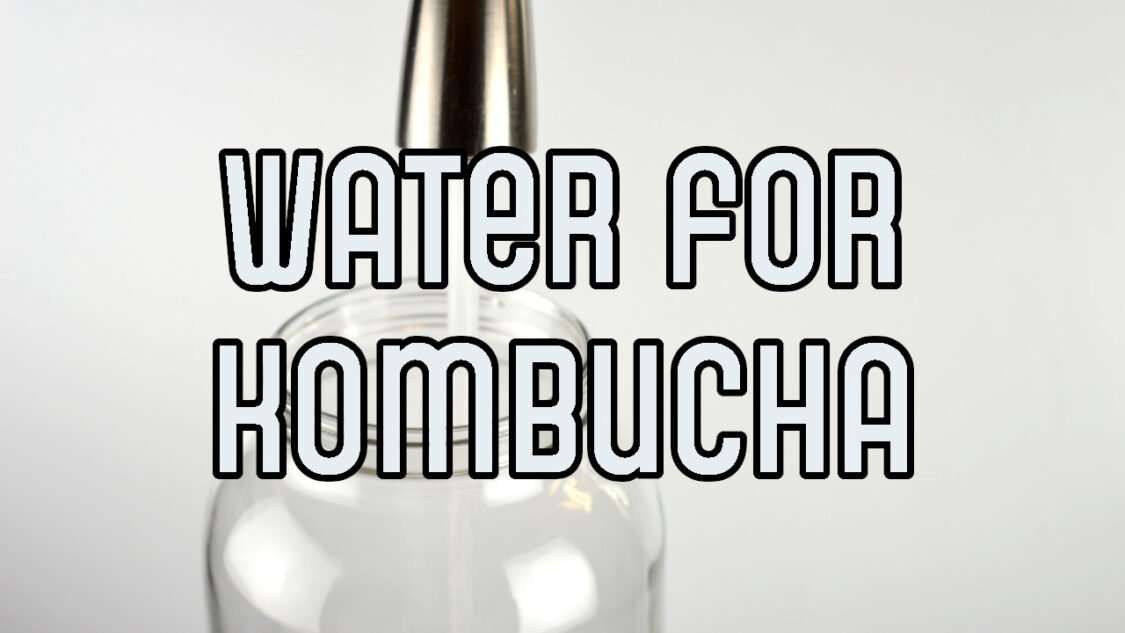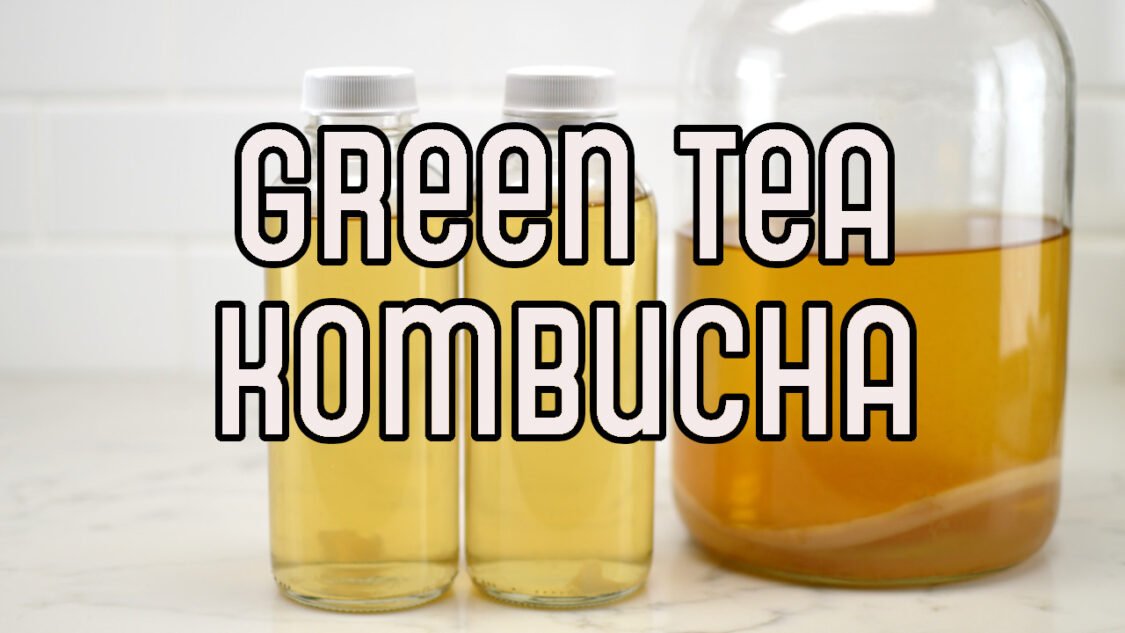Cranberry Kombucha
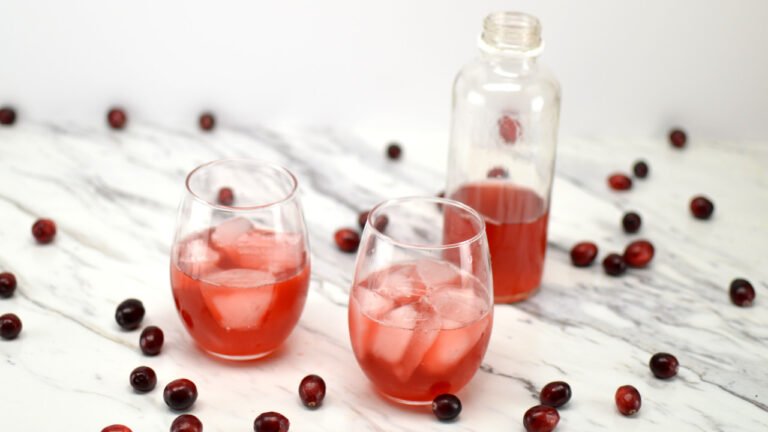
Cranberries have played a role in US holiday culture and family health & wellness for years. Cranberries are as tart as lemons because of they also have a low sugar content and concentration of acid. If you’ve ever bitten into a fresh cranberry, you know that it’s super tart—to the point of being almost inedible. Cranberries have anti-bacterial properties which help prevent bacteria from sticking within the body. They are also high in vitamin C which is why they were prized by 18th century sailors to ward off scurvy.
Drink cranberry kombucha on ice or use it to make a refreshing cranberry ginger kombucha mocktail or a Cranberry Pomegranate Kombucha Mocktail.
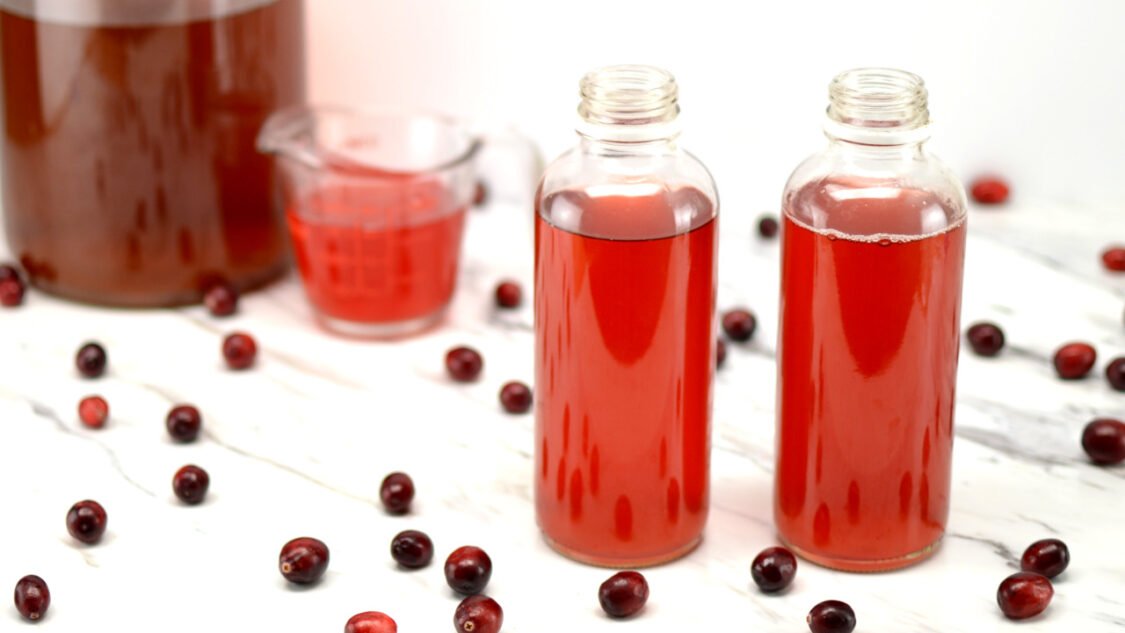
Kombucha Fermentation Overview
There are two fermentation phases when making kombucha:
Primary Fermentation: This is when you transform sweet tea into tart and tasty kombucha. Get all the details at my article on how to make kombucha.
Secondary Fermentation: This is when you carbonate your homemade kombucha by adding flavors (like pomegranate) and sugars and bottling it.
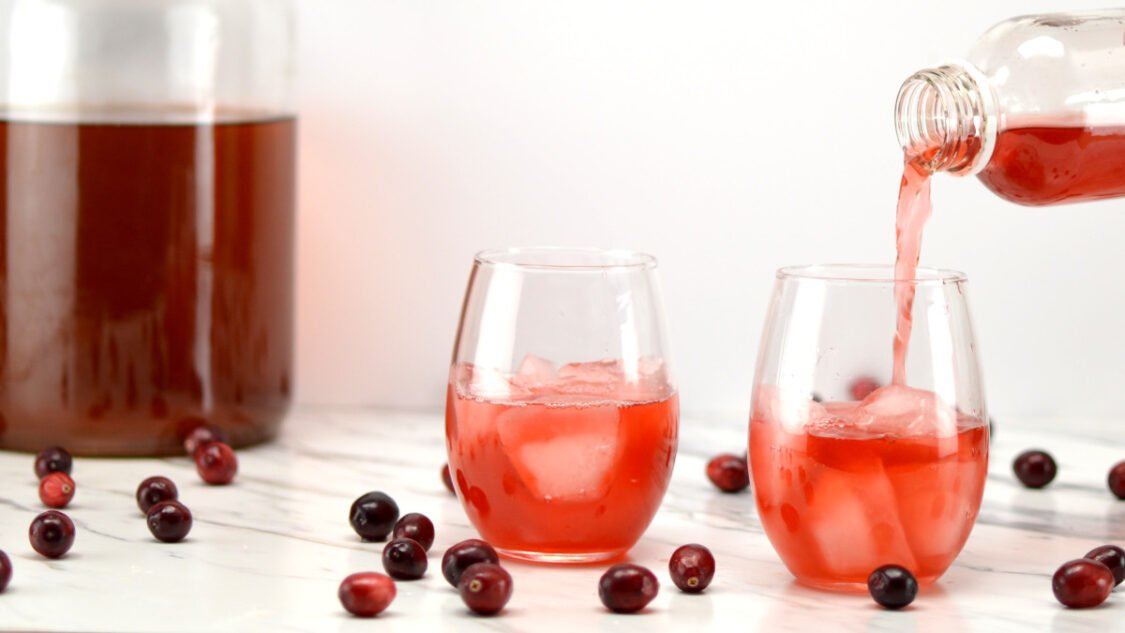
Preparing for Secondary Fermentation
This recipe makes about 7 x 16 fluid ounce bottles of finished kombucha (from a 1-gallon batch of unflavored homemade kombucha aka from your primary fermentation).
Reserve 2 cups (about 16 oz / 0.47L) kombucha and your SCOBY from your completed primary fermentation and set aside – you will use this as your starter for your next gallon batch of kombucha.
With your kombucha starter tea and SCOBY placed aside, you now have enough kombucha left to flavor and fill your bottles. This guide assumes are using 16 oz. glass bottles which are a popular choice for kombucha; however, there are many options for bottling kombucha.
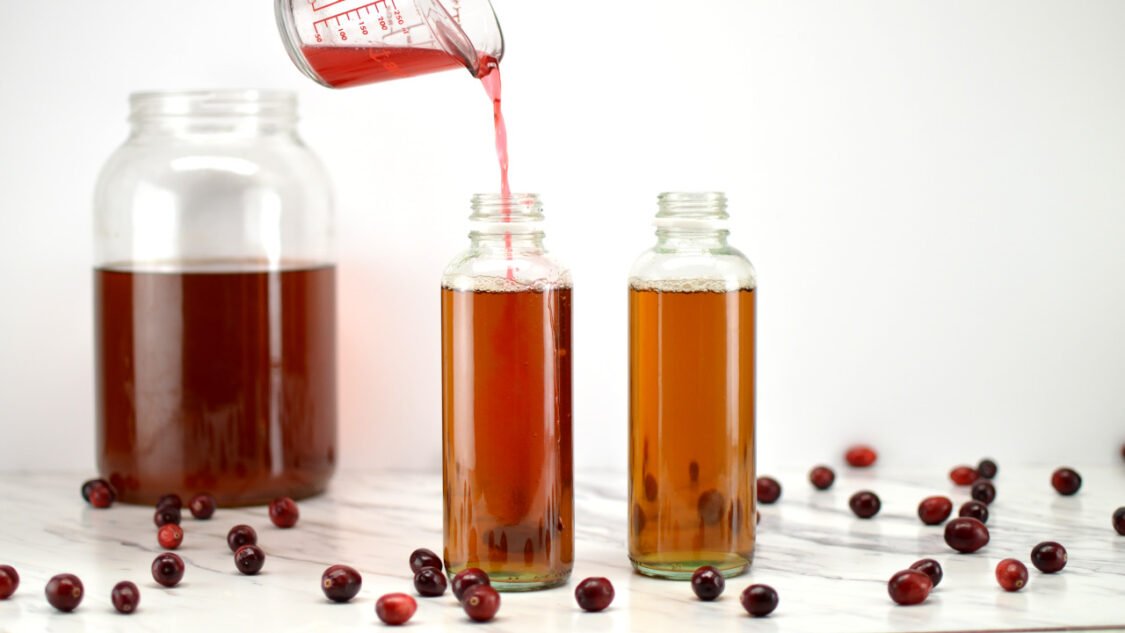
Ingredients to make Cranberry Kombucha
Kombucha Finished kombucha from your first fermentation is the base to which you will add the cranberry flavors.
Cranberries: Cranberries are small, hard, round, red fruits with a flavor that is described as both bitter and sour. They grow on freshwater bogs or marshes, mostly in the northern United States and southern Canada. Often the bogs are flooded during harvest since ripe cranberries will floats on the surface of the water. Cranberries are related to blueberries and wintergreen.
Sugar: For this recipe we will make a blueberry syrup with water and sugar. The additional sugar is for the bacteria and yeast to feed on which creates carbonation–extra fizzy goodness.
How to make Cranberry Kombucha
Make flavor syrup: Combine cranberries, sugar and water to a small saucepan and make a cranberry syrup.
Add Flavors: Add flavor syrup to each bottle.
Bottle: Transfer kombucha to fermentation bottles.
Condition: For 3 to 10 days, until it reaches the carbonation level you like.
Enjoy: Chill in the fridge before serving.
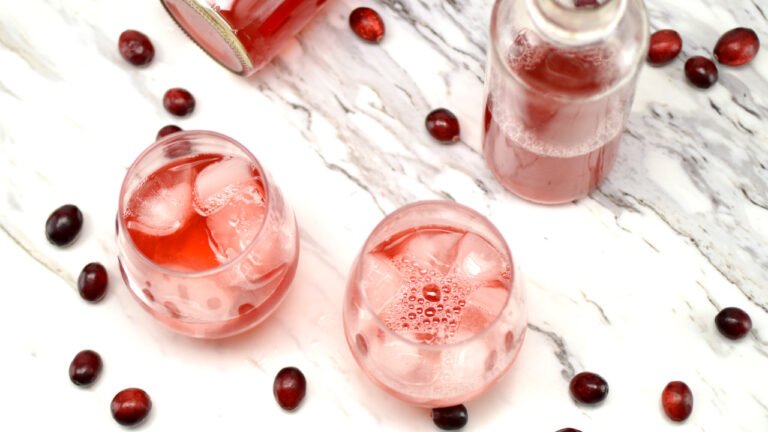
Cranberry Kombucha Recipe
Yield: 7 bottles • Active time: 20 minutes • Total time: 3 -10 days
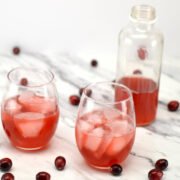
This recipe assumes you are doing a secondary fermentation (flavoring and carbonation) in the bottle. You may also incorporate a third fermentation using the same proportions but following the third fermentation steps.
Ingredients:
1-gallon homemade kombucha from a first fermentation, 1.9 L
1 cup cranberries, fresh or frozen, 148 g
1 cup tap water, 100 g
1.5 cups sugar 301 g
Instructions:
Prepare flavor syrup: Combine cranberries, sugar and water to a small saucepan. Heat on medium until the mixture begins to simmer. Allow to simmer for about 5 minutes until all of the berries have burst. Remove from heat and let cool to room temperature. (You can set the pan in a bowl of ice water to speed up the cooling process.) Once cool, strain into a heat resistant glass measuring cup. You should have about 1 cup of flavored syrup.
Flavor: Evenly divide cranberry syrup between bottles. About 2 Tbs per bottle.
Sweeten: Since the cranberry syrup contains the sugar, there is no need to add more sugar!
Fill bottles: Transfer kombucha into fermentation bottles, leaving about 1 inch empty space at the top.
Cap: Cap the filled bottles and tighten the cap snugly.
Ferment: Place in a dark, room temperature area for 3 to 10 days, until it reaches the carbonation level you like. This process will go faster in warmer climates, and slower in cooler climates.
Enjoy: Chill your cranberry kombucha in the fridge before serving. Since this recipe uses a flavoring syrup there is typically no reason to strain it unless baby SCOBYs form in the bottles.
Homemade cranberry kombucha can be stored in the fridge, tightly sealed, for several weeks.
Tips & Tricks:
Make sweet tea for your next batch the night before you flavor and bottling and let it cool on the stove overnight so that you can flavor your kombucha and get your next batch started at the same time.
If this is your first time brewing, it may be helpful to use a plastic water bottle as a gauge. Fill a recyclable plastic bottle with kombucha (leaving 1.5 inches empty at the top). When this bottle becomes rock hard, you’ll know the glass bottles are also ready. This will help you gauge how long it take for kombucha to carbonate your climate and will prevent bottle explosions.
Nutrition Information:
Kombucha Recipes You Might Also Like
Helping you learn to brew kombucha, find inspiration for new kombucha flavors and use kombucha to make kombucha mocktails



